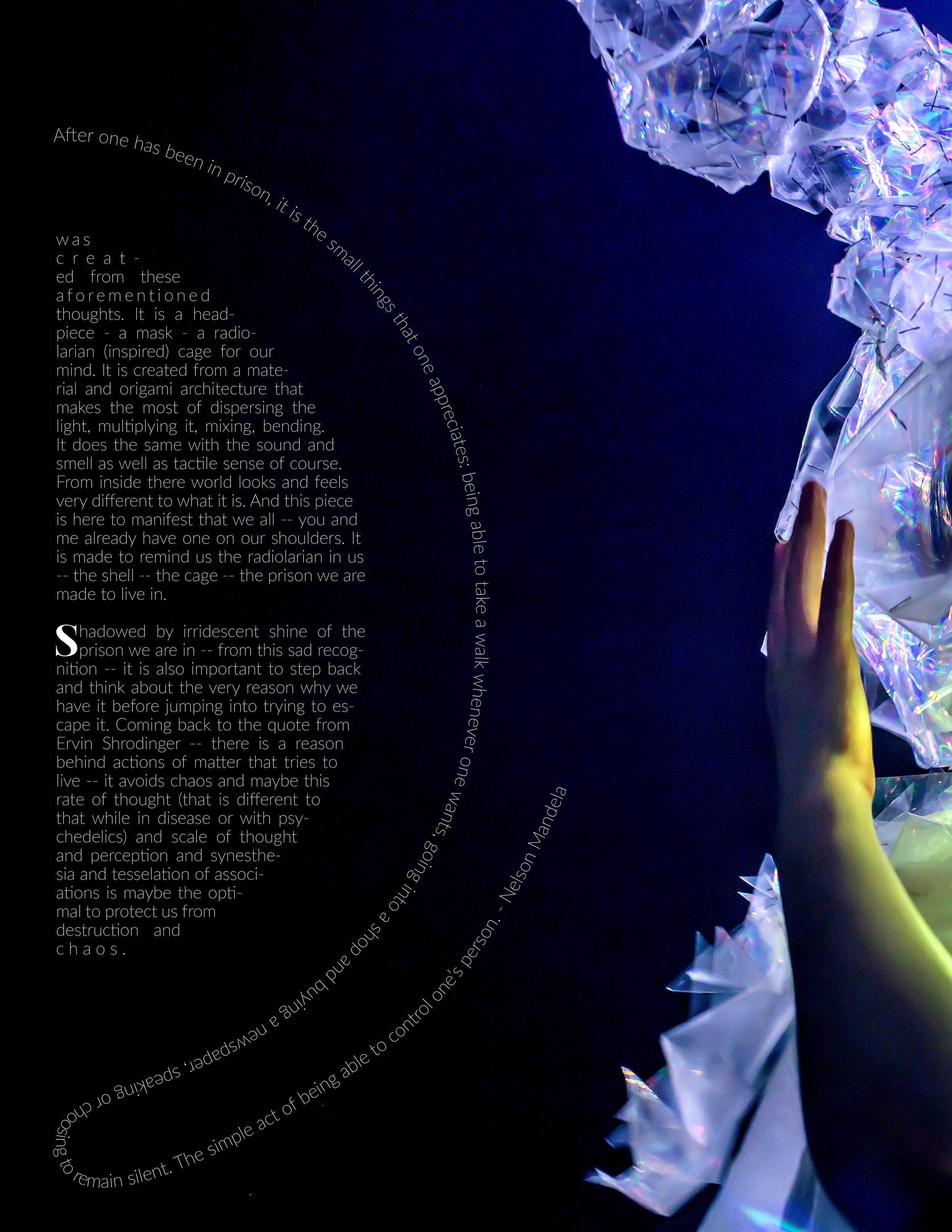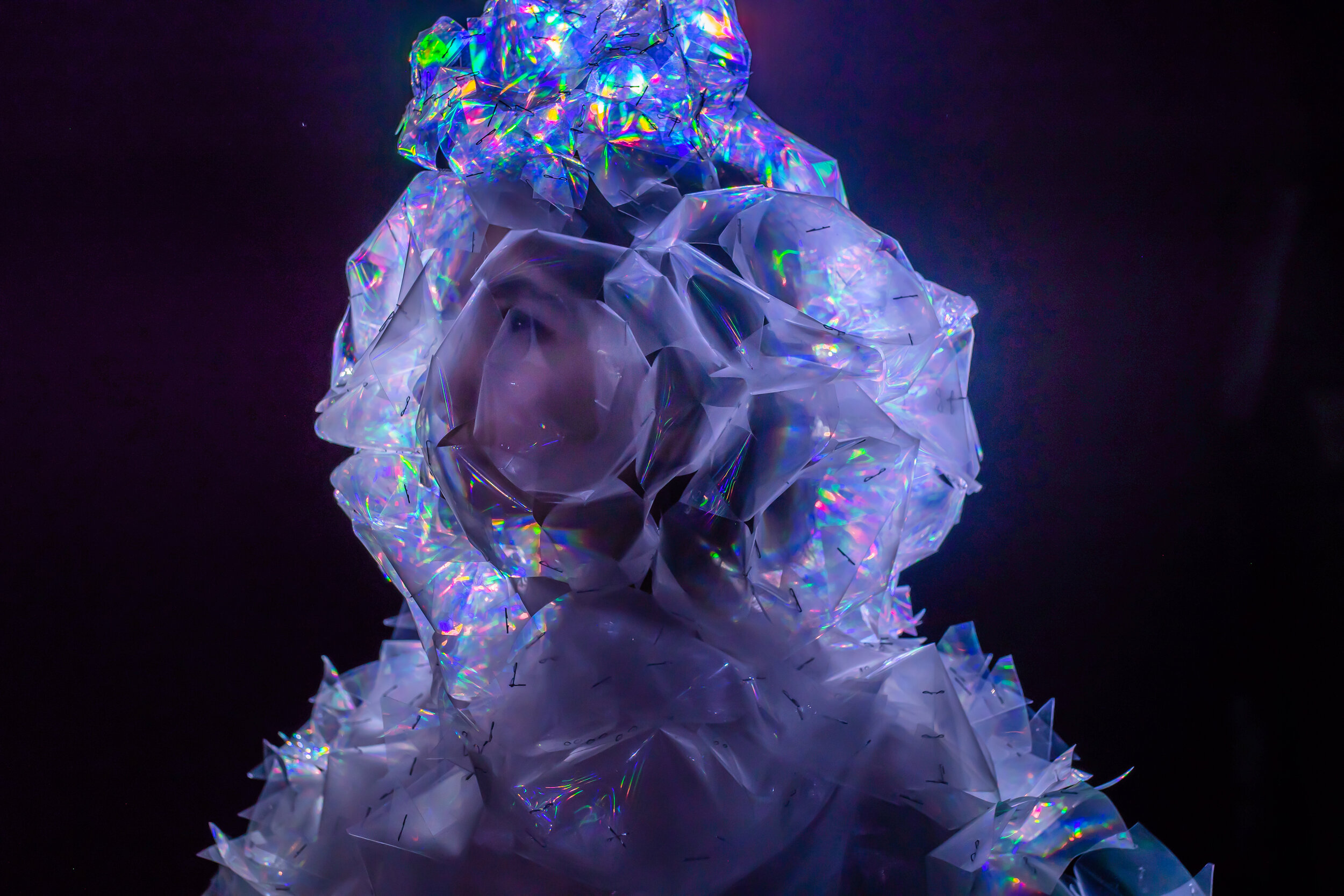
October 2019
Design, Modeling, Writing, Choreography, Dance and Image editing by Siranush
Radiolarian Mask, 1 x 5 m diffraction grating acrylic, ~300 iron staples, white and purple organza, 5 m 50 optic fibers, custom LED-Arduino system for light control. Sponsored by Riskin lab and MIT ACT Maker Space at Media Lab.
Our limited brains and perceptions make us Radiolarians… This project is my first attempt to explore new perceptions (neoperceptions)…
Radiolarian, painting by Ernst Haeckel.
Dream it.
Mesmerized by tiny star-like creatures painted by 19th century naturologist, I studied that they build a shell around them and interact with the world using tiny spikes as mechanosensors of food trapped in their radial net. I was so surprised then to understand that my own head and brain are like radiolarian net and shell — filtering majority of the signals and letting me perceive only a reconstructed simulation of reality. I wanted to explore how close can I feel to this dazzeling unicellular creature and how many more filters can I put on my perceived reality and still make sense of my surroundings.
Lights through a diffraction grating acrylic.
Build it.
I chose visual and tactile to be the main senses I want to cut off partially or disturb given their importance for our brains compared with others. Material research led me to use diffraction grating acrylic, which is a versatile tool for creation of visual illusions, easy to handle and make intricate constructions. After cutting it into tiny triangles, I stapled those into larger structures. Exploring the bending and stabilizing features of such constructs I iteratively found modules that seemed to be resembling the radiolarian foramena (openings). I added optic fibers as a new sensory element allowing for creation of visuals and helping with sense of touch.
Radiolarian mask.
Grow it.
With idea in mind to cover the whole body, I only had time left to make a mask for one’s head. I sawn a constraining the arms and bodily touch dress and explored the movements and visual perception while walking around MIT with that dress and the mask on my face. It was indeed an experience that produces a lot of pain in one’s head as visually everything is multiplied and mixed with everything and you cannot probe the environment with touch to stabilize yourself. Movements converged to undulations and rotations and I, indeed, ended up feeling comfortable in this world by the end of the experiment, as my fellow radiolarians.











Contributors
Design, building and modeling by Siranush Babakhanova
Photography by Garrett Souza
Sponsored by Riskin lab and Maker Space Media Lab
Supervised by Prof Azra Akšamija



